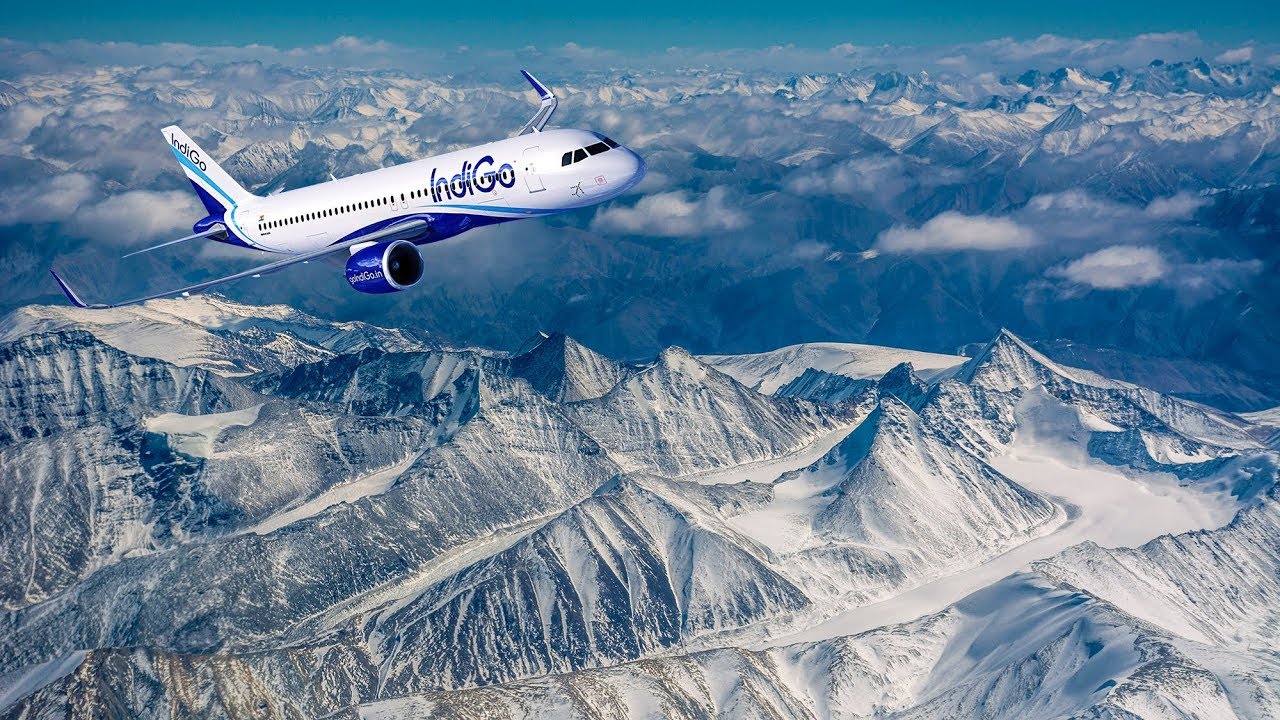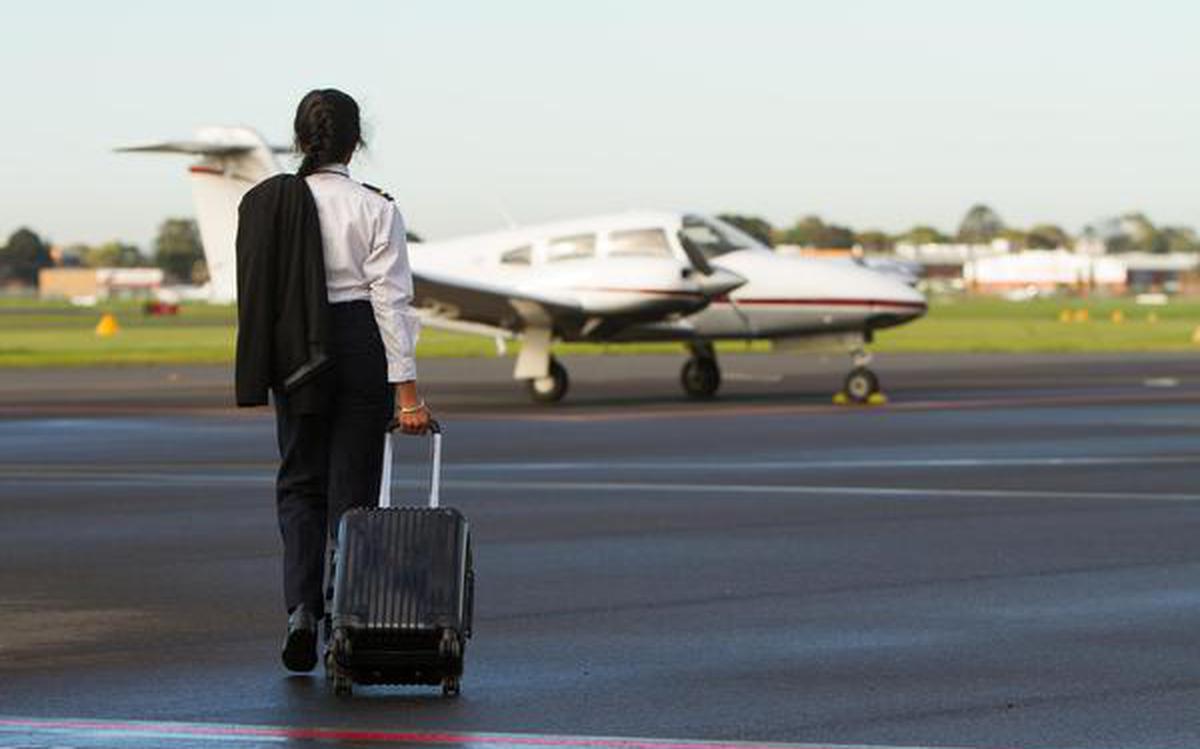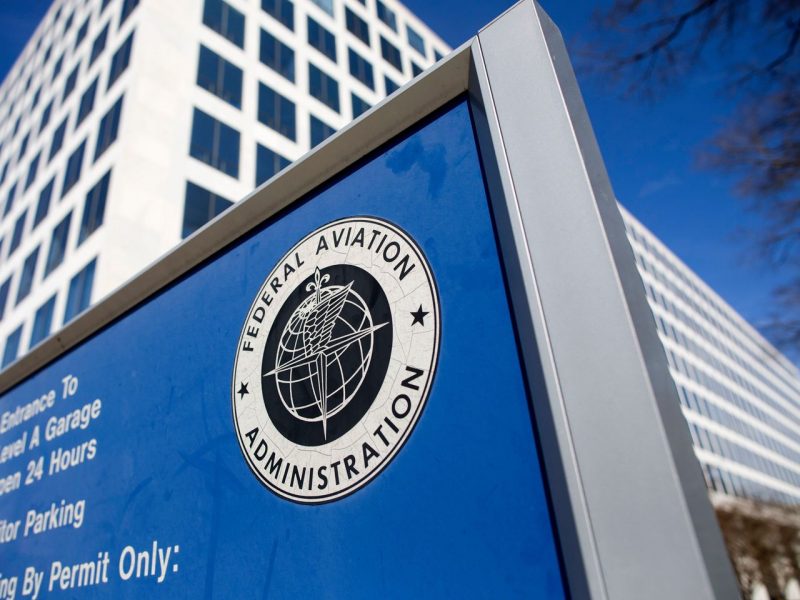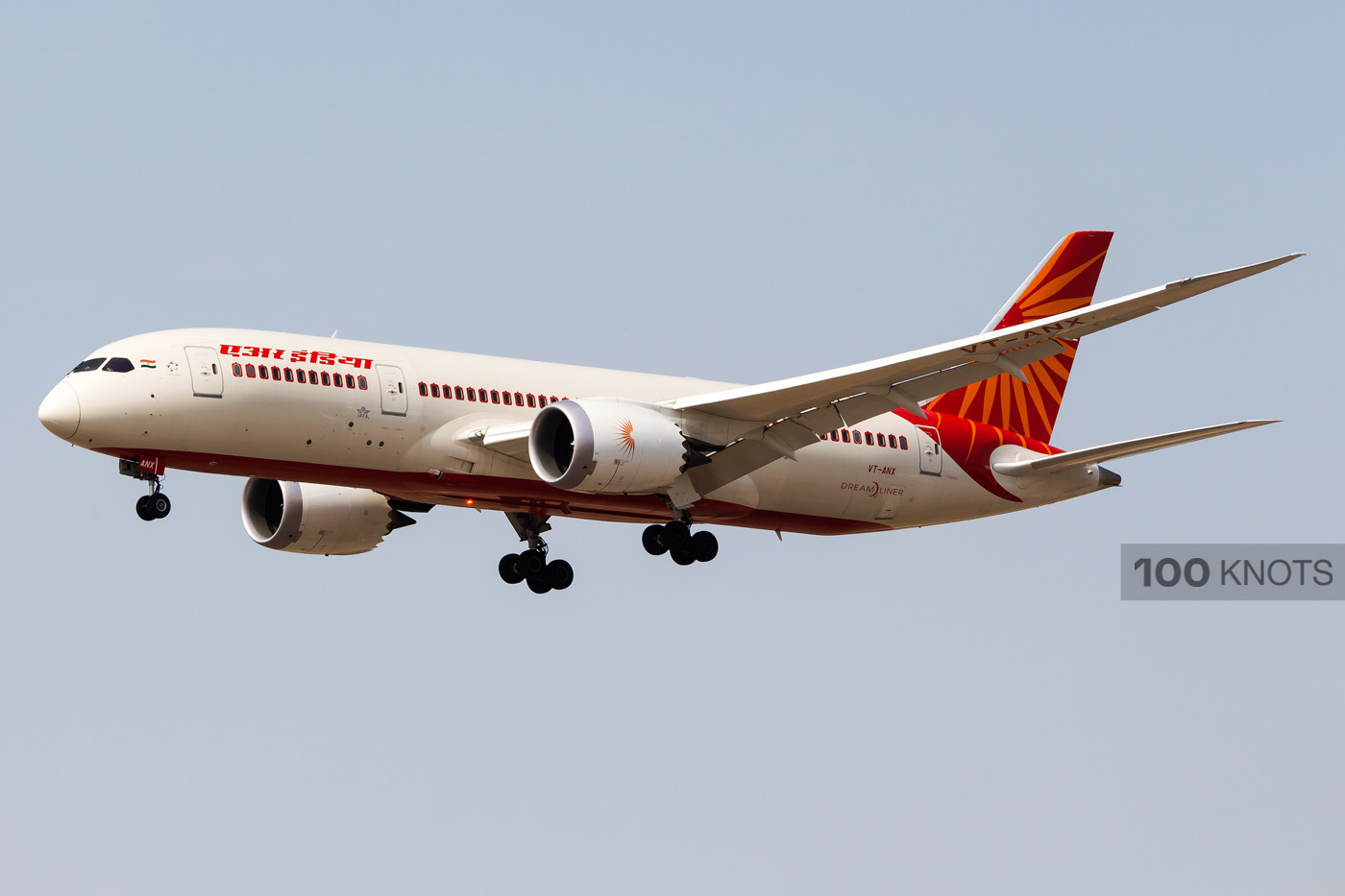IndiGo adds 19 new connecting flights to Portugal and Switzerland, via Turkey
Sakshi Jain
24 Nov 2022

IndiGo, on Wednesday, November 23, under its codeshare agreement with Turkish Airlines, began offering flights to Portugal and Switzerland via Turkey.
A Codeshare Agreement is an agreement between two or more airlines to publish and market the same flight using their own airline designator and flight number as part of their published itinerary or schedule. The codeshare agreement enables Turkish Airlines and IndiGo to promote the same flight using their respective identifying codes.
With the help of the codeshare arrangement, Turkish Airlines and IndiGo will be allowed to promote the same flight under their individual identification codes
Also read: DGCA allows IndiGo to wet lease Turkish Airlines planes
According to IndiGo, the new routes would provide passengers looking to fly between India and Europe over the forthcoming holiday season with new options and more capacity. According to the airline, both business and leisure travellers will be catered to.
Also read: IndiGo to debut with widebody aircraft for international expansion
“We have witnessed a huge demand for travel from India to Turkey, Switzerland, and Portugal. Keeping customer demand in mind, we now offer 19 connecting flights through Istanbul to destinations like Geneva, Lisbon, Porto, and Basel. This will not only enhance international connectivity but also add capacity to these routes and make travel more affordable. We will strive to stay true to our promise of affordable fares, on-time performance, and courteous and hassle-free service.”
–Vinay Malhotra, Head of Global Sales at IndiGo
These places are well-known for having breathtakingly beautiful tourist locations all year round.
Portugal has some of the cleanest beaches in Europe, with a blue sea with sandstone cliffs and oddly shaped rock formations all around. Major tourist attractions are the capital Lisbon, the city of Porto, Odemira, Faro and the city of Sintra.
Switzerland, known as "Paradise on Earth," is a stunning, popular travel destination. It is stunning all year round, despite the fact that during the winter it is most well-known for its ski resorts. Switzerland is the ideal place to go skiing because the Alpine Alps extend all the way through the Balkans to France.
Christmas markets, winter festivals, stunning beaches, rich culture, architectural wonders, and of course, New Year's celebrations will make Europe spectacular and more alluring to tourists.
IndiGo has witnessed a huge demand for travel from India to Turkey, Switzerland, and Portugal
According to the airline, these flights would not only advance global tourism, trade, and commerce but also lower the cost of travel to these locations thanks to direct links and increased capacity.
IndiGo's passenger operations are not the only ones expanding internationally; the airline's freight division, known as IndiGo CarGo, is also expanding. Airbus A321 P2F aircraft are now in service with the airline, and a second one will be added in December.
Also read: IndiGo to bolster cargo operations by adding another freighter aircraft by year-end
On Tuesday, November 22, it completed its maiden international mission between Kolkata and Yangon in Myanmar, transporting general cargo with a payload of more than 19,000 lbs.
“We are thrilled to expand IndiGo CarGo operations to international shores with its flight between Kolkata-Yangon. Both cities are major commercial hubs, and freighter service between them will bolster the supply chain between India and Myanmar. We anticipate that the business will expand over the next few months as we expand our freighter fleet and add new destinations to our CarGo network.”
–Mahesh Malik, Chief Commercial Officer, IndiGo CarGo
https://twitter.com/JetPhotos/status/1575566581400305668?ref_src=twsrc%5Etfw%7Ctwcamp%5Etweetembed%7Ctwterm%5E1575566581400305668%7Ctwgr%5E1fd0eb6bced23991390b5539bde769293419af9d%7Ctwcon%5Es1_&ref_url=https%3A%2F%2Fsimpleflying.com%2Findigo-codeshare-flights-to-europe%2F
The airline will benefit financially from having a dedicated cargo fleet from IndiGo, which will also enable it to serve markets like China, Vietnam, the Middle East, and some CIS (Commonwealth of Independent States) nations.
Read next
DGCA boosts monitoring of Flying Training Organisations to increase safety
Radhika Bansal
26 Nov 2022

Aviation regulator DGCA has put in place various measures to enhance the monitoring of flying training organisations, including the installation of high-resolution cameras in their premises to keep track of the training activities.
Besides, the watchdog has directed that the Flying Training Organisations (FTOs) should monitor and record data of training flights, and at least 25% of the flight data should be analysed daily. The move also comes against the backdrop of incidents involving training flights and instances of certain individuals not following the authorised flight plan during training. There were 35 FTOs at the end of August this year.
In a circular, the Directorate General of Civil Aviation (DGCA) said the objective is to enhance oversight over flying and ground training activities of FTOs for improving the safety of operations as well as the training quality.
DGCA boosts monitoring of Flying Training Organisations to increase safety
ALSO READ - DGCA reviews 30 flying training organisations; suspends certified flight instructors
All the FTOs should install cameras of high resolution on their premises to ensure proper visibility of flying training activities. The cameras should cover the apron area, hangar, taxiway and runway, classrooms, examination room and areas where the flights are authorised in the flight authorisation register, as per the circular issued on November 22.
FTOs have to ensure that the cameras are operational within 90 days. Concerning flight data monitoring in a training aircraft, DGCA said the safety manager concerned should "carry out flight data analysis of at least 25% of the FTO on daily basis and maintain a record of analysis".
Many planes available for flying training are equipped with a glass cockpit that has a provision for recording flight and/or fitted with ADS (B), which can also monitor the path followed by the aircraft.
"FTOs operating with aircraft equipped with glass cockpit or ADS (B) shall monitor, analyse and maintain the data…," the circular said. ADS (B) refers to Automatic Dependent Surveillance-Broadcast.
Many planes available for flying training are equipped with a glass cockpit that has a provision for recording flight and/or fitted with ADS (B), which can also monitor the path followed by the aircraft.
The regulator noted that FTOs operating with planes that are not pre-equipped with glass cockpits or ADS (B) should devise a method within 90 days for recording and monitoring the flights to check if the flight path taken by the trainee pilots and instructors is by the flight authorisation.
FTOs have been asked to install/carry equipment which automatically records at least parameters such as engine start/stop time (as feasible), flight path followed, and height and speed of aircraft at all times.
According to the regulator, FTOs should ensure that surveillance cameras are functional during flying activities. The camera feed must be displayed in the CFI, Deputy CFI and flying instructor rooms. CFI refers to Certified Flight Instructor.
The circular said that the recording of cameras should be preserved for at least 30 days and the flight data of all the devices for a minimum of 6 months.
n 2021, after a competitive bidding process, AAI awarded nine FTO slots at five airports
ALSO READ - DGCA suspends operations of 2 flying training schools due to serious safety concerns
The circular also advised that the Student Pilot License (SPL) and Flight Radio Telephony Operators License (FRTOL) (R) exams be monitored directly under live feed by the Directorate of Flying Training (DFT) of DGCA.
ALSO READ - Northeast India’s first commercial pilot training academy set to begin at Lilabari airport
In 2021, after a competitive bidding process, AAI awarded nine FTO slots at five airports at Belagavi (Karnataka), Jalgaon (Maharashtra), Kalaburagi (Karnataka), Khajuraho (Madhya Pradesh) and Lilabari (Assam). As on 30th June 2022, four of these FTOs are operational: one each at Jalgaon and Lilabari and two at Kalaburagi.
In June 2022, after a competitive bidding process, six more FTO slots were awarded by AAI at five airports namely: Bhavnagar (Gujarat), Hubballi (Karnataka), Kadapa (Andhra Pradesh), Kishangarh (Rajasthan) and Salem (Tamil Nadu).
Read next
The FAA has released new pilot training guidelines to resolve manual flying shortcomings
Sakshi Jain
23 Nov 2022

The FAA has made guidelines to make sure pilots are prepared to operate highly automated aircraft safely and effectively without relying too much on technology.
The FAA report makes suggestions to help pilots develop their manual flight operations skills and keep them from becoming overly reliant on automation
The report is an advisory circular that focuses on "flightpath management," which is a general phrase for the planning, execution and assurance of proper aircraft trajectory and energy.
“Flightpath management is especially important in operating aeroplanes with highly automated systems. Even when an aeroplane is on autopilot, the flight crew should always be aware of the aircraft’s flightpath and be able to intervene if necessary.”
–FAA
The report includes no requirements. Instead, it offers advice and recommendations which will assist pilots in acquiring and maintaining manual flight operations abilities and preventing them from becoming unduly dependent on automation.
The document addresses four risk categories: manual flight operations, automation management, pilot-monitoring duties and aircraft energy management.
Additionally, airline operating procedures ought to encourage pilots to fly the plane manually, possibly for the duration of the flight and at least occasionally during the entire takeoff and landing phases.
The FAA report's 4 main categories include: Manual Flight Operations, Automation Management, Pilot-Monitoring Duties and Aircraft Energy Management
It is advised that airlines give special attention to instructing pilots on how to deal with automated systems, making sure they are aware of known system flaws and the particular flight circumstances in which such systems should not be employed due to the possibility of such failures.
“Training on failures should consider operationally relevant situations and should include failures of items that provide input to the automated systems. Examples include situations where assessment is difficult, situations where recovery is difficult if not properly recognised, and conditions that do not have a checklist.”
–FAA released document
Additionally, the statement exhorts airlines to guarantee that training effectively covers the crucial pilot task of flight path and flight-deck monitoring.
Pilots ought to receive training in "progressive intervention strategies," or how to bring up issues with copilots. These tactics ought to include disclosing flightpath deviations, recommending fixes, and "then directly intervening," like taking the controls.
Moreover, the FAA advises airlines to take steps to ensure that pilots are knowledgeable about and skilled in "energy management," which includes planning and controlling speed, altitude, thrust, and trajectory. It states that such training should cover particular flight situations, such as light takeoffs, low-altitude level-offs, and flying at an aircraft's maximum permissible altitude.
In response to the 737 Max crashes in 2018 and 2019, numerous regulations were introduced by the 2020 law with the goal of enhancing aviation safety. It featured provisions aimed at enhancing pilot training and proficiency and called for a review of the FAA's certification programmes.
On 29 October 2018, the Boeing 737 MAX operating the route crashed into the Java Sea 13 minutes after takeoff, killing all 189 passengers and crew
After the two Max crashes, complaints about pilot performance surfaced. Investigators pointed out pilot errors while attributing the crashes to a malfunctioning flight-control system.
“Flight path management is at the core of the concern that I have.”
–Steve Dickson, former FAA administrator said in 2021
According to the FAA, the National Transportation Safety Board's (NTSB) suggestion in reaction to the 2013 Asian crash in San Francisco, which claimed three lives, is also addressed in the revised training guidelines.
The NTSB blamed the incident on crew errors, notably a pilot's incorrect belief about how the jet's auto-throttle worked. Thus, the FAA report is focused on managing flight paths and enhancing pilot training altogether.
(With inputs from Flight Global)
Read next
Creditor banks have indicated they will issue no-objection certificates and allow SpiceJet to transfer all of its cargo and logistics operations to SpiceXpress and establish the cargo business as a separate entity, according to Ch-Aviation.
In August, SpiceJet foreshadowed the move, saying it would allow the cargo carrier to grow independently of the struggling parent airline.
ALSO READ - SpiceJet hives profit-making arm SpiceXpress into a separate entity
While SpiceXpress will operate as a separate entity, SpiceJet will continue to provide certain transportation services, ground and logistics support, management services, sharing and provisioning of resources etc. to SpiceXpress.
VT-SFB
SpiceJet said all related assets and liabilities, including, know-how, trademark, licenses, franchises, customer contracts and distribution network of cargo and logistics business would be transferred to SpiceXpress.
SpiceXpress recently posted revenues of INR 20.6 billion (USD252.8 million) in the three months to September 30, 2022, and a net profit of INR 2.12 billion (USD26 million) from transporting 27,675 tonnes of cargo. In contrast, SpiceJet reported a multi-billion quarterly net loss.
In addition to utilizing belly hold space in its fleet of 78 passenger aircraft (only 39 are active), SpiceJet also operates a fleet of three B737-700(BDSF)s and two (presently inactive) B737-800(BCF)s under the SpiceXpress brand.
SpiceJet foreshadowed the move, saying it would allow the cargo carrier to grow independently of the struggling parent airline.
ALSO READ - SpiceJet’s cargo business separation plan challenged by the lessors
Meanwhile, SpiceJet, which has spent much of 2022 fending off insolvency claims from disgruntled creditors and received USD122 million in emergency government funding as recently as October, is on the hunt for further capital.
ALSO READ - SpiceJet and Go First to get funds under modified ECLGS
Last week, ch-aviation reported that the airline's board had approved the raising of an unspecified amount of fresh capital through the issue of eligible securities to qualified institutional buyers. ch-aviation has contacted SpiceJet for further details on this and their plans for SpiceXpress.
(With Inputs from ch-aviation)
Read next
HAL (Hindustan Aeronautics Limited) has added a new plant in Karnataka for helicopter production, with the expectation to meet export targets.
HAL has established a new facility in Tumakuru, Karnataka, for the manufacture of helicopters, which will soon begin operations. The company has a plant here where it can build up to 60 helicopters, and it also has one in Bengaluru where it can build up to 30 aircraft annually.
In the near future, HAL may produce up to 90 helicopters annually, depending on the type and demand of the aircraft
“Depending on the type and requirement of the helicopters, the company could manufacture up to 90 helicopters per annum in the near future.”
–CB Ananthakrishnan, CMD, HAL
Ananthakrishnan also talked about the prospects and openings for India's significant defence localisation drive.
The Tejas manufacturing program's second line has also been put into action. By outsourcing a large portion of the work packages to the four biggest private sector vendors, HAL is also attempting to develop the private ecosystem.
For the second quarter of the current fiscal year, the corporation provided some solid financial results. At over Rs 8,400 crore, the order book appears to be very strong. For the first six months of the current fiscal year FY23, the repair overhaul and manufacturing ratio are 60:40. The upcoming year is also anticipated to see a continuation of this trend.
HAL's repair overhaul and manufacturing ratio for the first half of the current fiscal year FY23 is 60:40. This tendency is expected to continue in the future year as well!
“FY25 onwards the manufacturing contracts will get executed and then the ratio will change. For FY25 the repair overhaul and manufacturing ratio are expected to be at 50:50.”
–CB Ananthakrishnan, CMD, HAL
During the last few months, HAL has signed various contracts with different countries as well as with India’s defence.
In January 2022, HAL and the Government of Mauritius (GoM) inked a deal for the export of one Advanced Light Helicopter (ALH Mk III) for the Mauritius Police Force, in keeping with the Government's objective to increase defence exports to friendly foreign countries.
HAL and the Government of Mauritius (GoM) entered into a deal for the sale of one Advanced Light Helicopter (ALH Mk III) for the Mauritius Police Force
In April 2022, Six officers of the Nigerian Army Aviation will receive Phase-II flying training on the Chetak Helicopter thanks to a contract that HAL inked with the Nigerian Army. This represents the continuation of a contract for the successful completion of Phase-I flight instruction for six Nigerian Army aviation officers that was signed in April 2021.
In March 2022, at the Wings India-2022 event in Hyderabad, an Intent of Cooperation (IOC) was signed between HAL and PHL for the purchase or long-term lease of 20 helicopters, 10 of which will be civil variants of the ALH Dhruv and Light Utility Helicopters.
An Intent of Cooperation (IOC) was signed between HAL and PHL for the purchase or long-term lease of 20 helicopters
This would also improve the helicopter industry in India's civil aviation market and create synergy between HAL and PHL.
In April 2022, HAL was awarded a contract for the manufacturing of 15 Light Combat Helicopters (LCH) at a price of Rs 3,887 crores, of which 10 will be produced for the Indian Air Force and five will be produced for the Indian Army.
For the fiscal year that concluded on March 31, 2022, HAL had its highest-ever revenue of approximately Rs. 24,000 crores (provisional and unaudited), representing a 6% revenue increase over the prior fiscal year. A year before, 22,755 crores was the corresponding amount.
The business delivered some impressive financial results for the second quarter of the current fiscal year as well. More contracts, more production and more exports are on their way!
(With inputs from CNBC-TV18)
Read next
Air India turned out to be the most punctual airline in October while Go First was at the bottom in the list of airlines with regard to on-time performance during the month. The OTP data was for four domestic airports: Delhi, Mumbai, Bengaluru, and Hyderabad. A flight is considered punctual if it leaves within 15 minutes of its scheduled time.
Since 2014, Air India hasn't topped the OTP chart for even a single month and would regularly report disappointing figures for departures. In October 2019, its OTP was 54.3%.
Air India posted 90.8% on-time performance (OTP) in October, beating all other Indian carriers for the first time in many years, followed by Vistara and AirAsia recording on-time performance of 89.1% during October, according to the monthly data released by the Directorate General of Civil Aviation (DGCA) on Tuesday, October 22.
ALSO READ - Air India beats IndiGo in the on-time performance in September
Air India becomes the most punctual airline in October in 8 years
After winning the bid on October 8, 2021, the Tata Group took over Air India on January 27. Six months later, Singapore Airlines veteran Campbell Wilson took charge as chief executive officer and managing director of Air India. One of his first pushes was to improve the airline's OTP.
Mr. Wilson communicated with the airline's integrated operations control center (IOCC) to report directly to him and give recommendations on improving on-time performance. Wilson inherited an airline that has largely been neglected for years. Sources say he's been busy keeping a close eye on daily losses and fixing systems bogging down the airline.
ALSO READ - Air India issues several guidelines to cabin crew to enhance on-time performance
One of the first things the Tatas wanted to improve with Air India was its customer experience. Timely departures, good seats, and in-flight entertainment screens that actually work are all being looked at. And while there's still some time before we can expect better aircraft interiors, it's good to see the remarkable progress made in the punctuality department, all within a year of the new owners taking charge.
When Air India was a government-run airline, it generally used to be at the bottom of DGCA's OTP list.
When Air India was a government-run airline, it generally used to be at the bottom of DGCA's OTP list. Not only did the airline beat others in OTP terms in October, but it also crossed the landmark of flying more than 1 million domestic passengers in a month after a long time. Air India flew 1.03 million domestic passengers in October, according to the DGCA data.
Similarly, IndiGo recorded an on-time performance of 87.5% followed by government-run Alliance Air with an on-time performance of 74.5%. While Spicjet had an on-time performance of 68.9%. Go First was at the bottom with on-time performance of 60.7% during the month.
Meanwhile, Go First's domestic passengers fell for the second consecutive month in October. Almost half of Go First's aircraft fleet is currently grounded due to engine supply and maintenance issues.
ALSO READ - Go First grounds over a fifth of its fleet due to delayed deliveries of engines by Pratt & Whitney
As per DGCA, analysis disclosed that the majority of delays (nearly 68%) were caused due to 'Reactionary' reasons.
As per DGCA, analysis disclosed that the majority of delays (nearly 68%) were caused due to 'Reactionary' reasons. Delay caused by late arrival of aircraft, crew, passengers or baggage from previous journeys come under Reactionary category.
So far as market share is concerned, IndiGo flew ahead of other airlines during the October month with 56.7% share in the domestic aviation sector. Vistara secured second slot with a market share of 9.2%. As per the latest data, of the aviation regulator, Indigo carried 64.71 lakh air passengers during the month while Vistara carried 10.49 lakh air passengers.
ALSO READ - Akasa Air had a 53% occupancy rate in its first month of operations
The latest entrant Akasa Air recorded a market share of 1.4% in October, up from 0.9% in September. The market share of AirAsia India rose to 7.6% from 5.9% in September. Air India and Vistara recorded a slight dip in market share to 9.1% and 9.2% in October from 9.2% and 9.6%, respectively, in September.
Indian carriers flew 11.4 million domestic passengers in October this year with about a 27% jump year-on-year.
In passenger load factor (PLF) or capacity utilisation, almost all major airlines recorded an increase except Akasa Air. The passenger load factor for IndiGo rose to 82.1% from 81.4% in September. SpiceJet also witnessed an increase in capacity utilisation to 88.1% from 85.8%.
For Tata group airlines, the PLF rose to 82.7% from 79.6% for Air India and to 84.2% from 77% for AirAsia India. Vistara witnessed a marginal increase to 85.5% from 85.4% in September. Akasa Air recorded a dip in capacity utilisation to 77.5% in October from 81.2% in September.
As per the DGCA, passengers carried by domestic airlines during January-October 2022 were 9.88 crore as against 6.20 crore during the corresponding period of previous year thereby registering annual growth of 59.16% and monthly growth of 26.95%.
The data said, nearly 1.14 crore passengers were carried by the domestic airlines during October in the country as against 89.85 lakh during the same period last year. Indian carriers flew 11.4 million domestic passengers in October this year with about a 27% jump year-on-year.



Comment